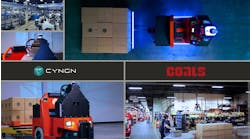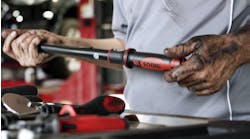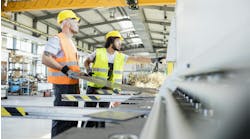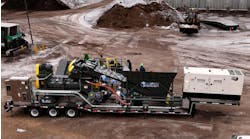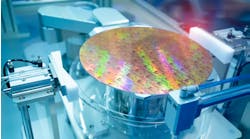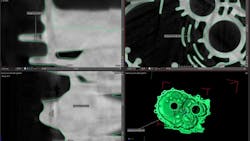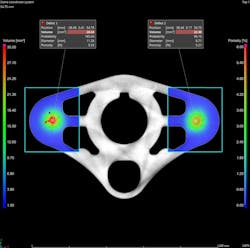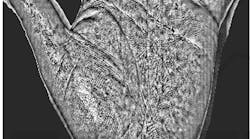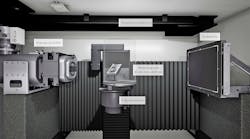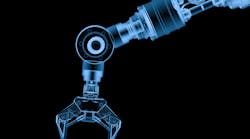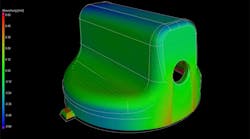In-Line CT Scanning Provides a Look at the Future of EV Quality Control
The moving assembly line has certainly proven its worth over the 100-plus years since Henry Ford introduced the industrial time-and-motion breakthrough in his Michigan automobile factory in 1913. The addition of robots (by GM in 1962) alongside human workers has further increased efficiencies.
But the success of the assembly line is inexorably tied to the quality of the components fed to it from production.
Thus, as the complexity of modern vehicles has risen dramatically in recent decades, particularly in the case of electric ones (EVs), the value of pre-assembly quality checks at key stages during active production has become increasingly apparent. In addition to various methods of surface scanning, some of the leading automotive manufacturers (along with others in aerospace, energy, and electronics) are using computed tomography (CT) to inspect deep inside complex components to ensure they are fit to send to the assembly line.
Now, CT scanning is expensive. But so is only finding out that costly components are defective after a vehicle rolls off the assembly line. The savings achieved in time and resources when valuable automotive parts are inspected for quality before they are installed in a vehicle can be significant.
That's what German luxury automaker BMW has concluded—which is why it is CT scanning the engine housings of every single one of its advanced iX model EVs.
In contrast to the company's other current electric vehicles, the iX is based on an independent platform. But it uses the same drive unit (motor, inverter, transmission) known as HEAT (Highly-Integrated Electric Drive Train) that is employed in the other BMW models. Ensuring the consistency and quality of this valuable drivetrain is clearly a priority for the automaker.
Robots, Scanners, and Software On the EV Production Line
At its Landshut, Germany, facility, BMW is using a combination of in-line robotics, CT scanning and detection, and analysis and visualization software, to inspect their HEAT e-engine housing during active production. The entire system was installed and integrated into their production line by Heitec, a global engineering solutions provider for a broad range of industries.
Heitec's installation delivers a continuous-flow process in which a robot plucks an aluminum housing off the production line, deposits it on a platform that feeds it into a HeiDetect Inline CT scanner, then shifts to the other side of the scanner to retrieve an already-scanned component and move that one back to the line. Each scan takes place in 50 seconds.
Watch a video of the process below:
Post-scan, Heitec's proprietary software quickly generates a digital model of each housing from the CT data, then transfers the model to Hexagon's VGinLINE software for rapid segmentation and analysis. Viewable onscreen by engineers, graphic-and-colored alerts are automatically generated to call out any significant porosity, cracks, geometric inconsistencies, or other production or material flaws that deviate from BMW's specific metrics requirements—and might impact quality.
Delivering Accurate Production Insights—At Speed
"Doing all this in the cycle time of the production line is the challenge," says Heitec co-founder Christian Abt. "You have to speed everything up to stay within that time—or even several seconds less than that."
Achieving this kind of fine-tuned industrial automation has become second nature to Heitec, which has been installing increasingly smart factory systems worldwide for more than 26 years. After completing his engineering degree, Abt first worked at the Fraunhofer Institute in Germany ("for a young engineer, a fantastic playground for robotics"). He left to co-found Heitec as robots were becoming a commodity, deciding to strengthen his young company’s automation offerings with the addition of CT scanning.
"Prior to that time, most CT was being used in the laboratory," he says. "We saw an opportunity to bring these machines into real-world production, supporting the guys in blue jackets on the factory floor with our x-ray technology, our robots, and our knowledge of automation."
However, the addition of CT to the production line has brought its own unique challenges.
"Manufacturing companies that are now coming to us for in-line CT have usually checked out all other possibilities but found no other solution that provides the level of quality assurance they are looking for," says Abt. "They are demanding answers that work for them."
Heitec customizes every installation to the specific industrial customer, sets up the robot(s) and CT scanner(s)—and then must deliver the promised rapid-inspection results. "If you’re familiar with using industrial CT in the past, you may remember hours for scanning and gigabytes of data to sift through for defects," Abt says. "That’s not the case here in production—there’s no time for that kind of delay."
The Secret is in the Scan—and the Software
The solution to the time crunch? Employing lower-resolution industrial CT scans that need significantly less time to capture an image—plus Heitec's scanner-integrated software designed to process this "less-heavy" information and reconstruct the component's volume data into a 3D computer model. This data is then loaded into holistic analysis and visualization software that queries the digital model, employing sophisticated algorithms and, most recently, deep learning—to reliably identify, interpret, and report potential quality issues despite the noisy images—within a much shorter time window.
"Trainable" is the key word here. The algorithms compare what they see against an existing database of all known identifiable defects that have been customized to each manufacturer’s product geometries (which is where the training comes in). The algorithms learn to identify specific manufacturing flaws by interpreting what the less-crisp voxels show.
Over time, deep learning gets even better at what it does; by comparing what it sees against real-world product data for which the solution is known, it learns to recognize patterns and features and call out deviations from the norm. In this way, it can provide highly accurate snapshots of what's actively happening on a particular production line—supporting confident decision-making about whether to accept or reject a part. This in turn informs production-variable changes, the effects of which can be captured, collated, and statistically examined. EV batteries are another area in which machine learning can be used in this way.
How to optimize this kind of AI methodology is what BMW is now exploring—as are forward-thinking manufacturers in other industries. Working closely under NDAs, with innovators such as Heitec and Hexagon, these companies are creating and curating their own internal data sets with which to train in-house deep learning systems.
"Training a deep learning system to one’s proprietary data understandably takes some time," says Handl. "But it pays off by saving highly valuable time and resources on the production line." Actionable insights into what’s happening on one's own factory floor are contributing to the further evolution of smart manufacturing, enabling companies across many industries to identify ways to improve quality while making their products more competitive.
